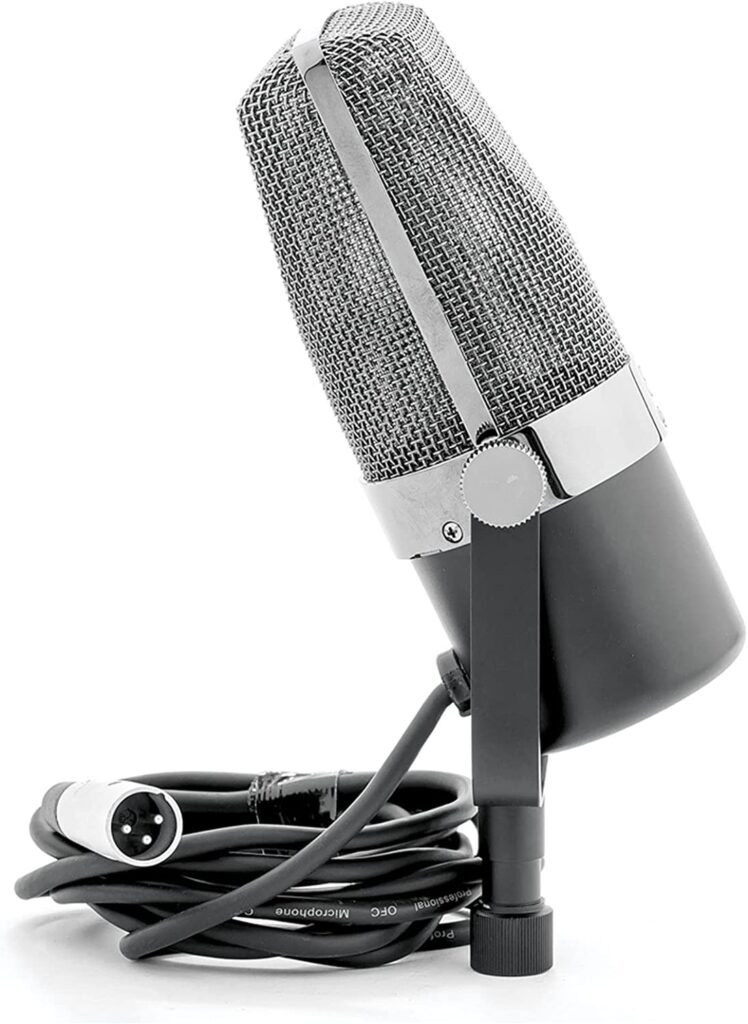Active microphones are the same as passive microphones, with one big difference: they have internal electronics and a custom transformer that boost the mic’s output level and keep the impedance the same across the entire frequency range.
Classes of an Active ribbon microphone
There are 3 different kinds of active ribbon microphones, such as:
- Dynamic, active ribbon microphones: Like a traditional dynamic microphone, these microphones have a ribbon element suspended between two magnets. The ribbon element is different because it has an internal preamp that makes the signal it sends out stronger.
- Condenser active ribbon microphones have a ribbon element suspended between two electrodes, just like traditional condenser microphones. The ribbon element is different because it has an internal preamp that makes the signal it sends out stronger.
- Hybrid active ribbon microphones: These microphones take parts from both dynamic and condenser active ribbon microphones. They use a ribbon element that is held between two magnets or electrodes and is powered by an internal preamp.
Pros of an Active ribbon microphone
Some of the most common things about active ribbon microphones are:
- Internal preamp: This lets the microphone send out a stronger signal, which can be helpful when the microphone is used to pick up a sound source that is far away or not very loud.
- High sensitivity: Active ribbon microphones are usually more sensitive than passive ribbon microphones, which means they can pick up a wider range of frequencies and more subtle sounds.
- Smooth frequency response: Active ribbon microphones are known for their soft and natural response, which can help make a warm and full sound.
- Low self-noise: Active ribbon microphones tend to have low self-noise, which means that when they are used to record a sound source, they make little background noise.
- Durability: Active ribbon microphones tend to last longer than passive ribbon microphones because they are less likely to get damaged by handling or electrical interference from the outside.
- Versatility: Active ribbon microphones can be used to record vocals, instruments, and amplifiers, among other things. They can also be used for live sound.
Cons of an Active ribbon microphone
Some things that could be bad about using an active ribbon microphone are:
- Increased cost: Active ribbon microphones are usually more expensive than passive ribbon microphones because they need more electronics to boost the signal.
- Dependence on power: Active ribbon microphones need either an internal battery or an external phantom power source. If you use an active ribbon microphone on location, you may need to bring extra gear or pay attention to the power supply.
- Potentially lower output level: Some active ribbon microphones may have a lower output level than other microphones. If this is the case, you may need to add more gain to boost the signal. If this needs to be done carefully, it can also make noise and cause other problems.
- Limited availability: Active ribbon microphones are less common than passive ribbon microphones, so if you want to buy one, you might have fewer options.
- Requires additional setup: Active ribbon microphones take more time to set up than passive ribbon microphones because you have to ensure the microphone is powered and the signal is amplified correctly. This can add another level of difficulty to how you set up your recording or live sound.
What is the main difference between active and passive ribbon microphones?
The main difference is that active ribbon microphones have internal electronics and a custom transformer that boost the microphone’s output level and maintain consistent impedance across the entire frequency range, while passive ribbon microphones do not have this internal amplification.
What are the advantages of using an active ribbon microphone?
Active ribbon microphones offer several benefits, including a stronger signal output, higher sensitivity for capturing a wide range of frequencies, a smooth and natural frequency response, low self-noise, durability, and versatility for recording various sound sources.
Do active ribbon microphones require external power sources?
Yes, active ribbon microphones typically require either an internal battery or an external phantom power source to operate. This power supply is necessary to run the internal preamp that boosts the microphone’s signal.
Are active ribbon microphones more expensive than passive ones?
Yes, active ribbon microphones are usually more expensive than their passive counterparts because they incorporate additional electronics to amplify the signal, which adds to their production costs.
Are active ribbon microphones widely available in the market?
Active ribbon microphones are less common than passive ribbon microphones, so you may have fewer options to choose from when shopping for them. However, they are still available from select manufacturers and specialty audio equipment stores.




